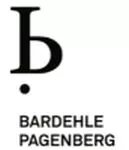With the establishment of the Unified Patent Court (UPC), the assessment of the inventive step takes on a whole new context. After all, the UPC covers an area in which different assessment approaches are used.
Although the UPC is also based on the European Patent Convention, practice shows that the examination criteria differ — and this can also affect the results.
The EPO systematically examines inventive step using the problem-solution approach. In doing so, it methodically determines the closest prior art, derives a technical problem based on a distinguishing feature, and finally examines whether the claimed solution was obvious to a person skilled in the art. The aim: an examination scheme that is as uniform and transparent as possible.
At the UPC, there is currently no uniform examination approach recognizable. Although some divisions recognize the problem-solution approach, they state that the EPC does not prescribe this approach. According to these divisions, a realistic starting point is determined first — i.e., a document that would have been relevant for the person skilled in the art if they had wanted to develop a comparable solution. The underlying technical problem is usually determined by assessing the specification of the patent-in-suit. The question of whether the solution was obvious is often based on an overall assessment of all relevant circumstances.
In the decision of the Munich Local Division dated April 4, 2025, in the case Edwards v. Meril, this examination framework was referred to as the "German" approach. The Local Division itself applied the problem-solution approach, describing it as the primary tool to ensure increased legal certainty. However, it also made it clear that both examining methods — when applied properly — should lead to the same result.
That said, initial practical examples show that this is not necessarily the case: In the case Sanofi vs. Amgen (EP 797) the Opposition Division of the EPO recently upheld a patent, while the Central Division Munich of the UPC had shortly before deemed it invalid.
So what does this mean for your strategy?
First: The right choice of the source document is crucial: whether "closest prior art" (EPO) or "realistic starting point" (UPC) — the terms are similar, but the criteria for defining the source document may differ.
Second: Motivation and cause are important in both approaches: the problem-solution approach pays more attention to the individual feature, whereas the UPC or the German approach is more of an overall assessment.
Third: Actively follow the case law: The decision of the Munich Local Division suggests a possible convergence of the approaches. Staying up to date here will give you a tactical advantage. A look at our UPC decision database will help!
In short: if you are proficient in both systems, you will have a clear advantage. We at BARDEHLE PAGENBERG are happy to support you in this.
The content of this article is intended to provide a general guide to the subject matter. Specialist advice should be sought about your specific circumstances.


